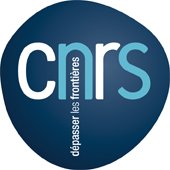Motivation: Heterogeneous graphs

Objectives
Many tasks exist
- Node classification
- Link prediction
- Partitioning (community detection)
- Collaborative Filtering
- Graph classification
- Information diffusion
- Anomaly detection
- Regression
- ...
Graph representation
- Graph patterns
- Node statistics, e.g.
- Incoming and outgoing edges
- “Distance” to other nodes
- ...
Limitations
- Might not be adapted to the problem
- Human expertise
Learning representations
Similarility with the problem of word representation
Objectives
- Homogeneous representation space: each node n corresponds to xn∈Rn
- No human expertise
- Latent space geometry reflects properties of entities
- Handle content (image, text, ...)
 ⇒
⇒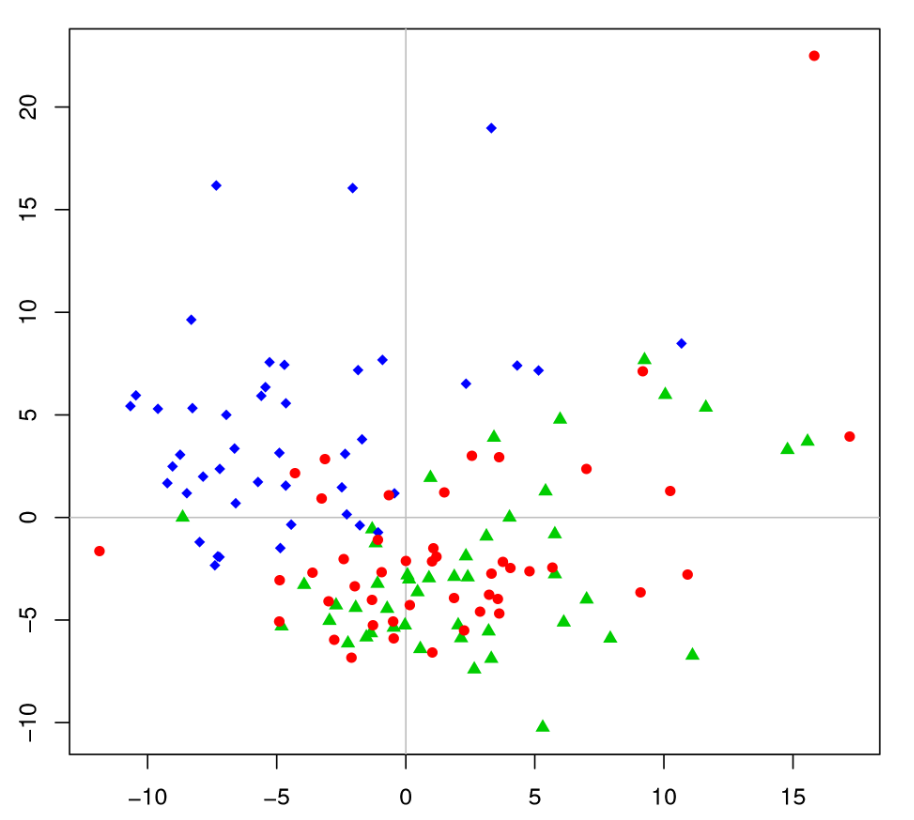
State of the art
Graphs and representations
- Knowledge graphs [Jenatton 12, Bordes 13,...]p(xi→xj)∼\bbarzi−zj+zr\bbar2
- Neighborhood prediction [Mikolov13,Perozzi 14,Grover 16,...]p(xj∣xi)∝σ(zi⋅zj)
- Task specific cost
- Classification
- Graph Neural Networks [Scarselli 09], Embeddings [Jacob 14]
- Regression
- Embeddings [Ziat 15, Smirnova 16], ...
- Recommendation
- Matrix Factorization [Koren 09], ...
- Attributed graphs: Graph CNN [Defferrad 16, Kipf 17], ...
Why uncertain representations?
Representation models should cope with:
- Lack of information (= isolated nodes)
- Contradictory information (= neighbors with conflicting properties)
Using distributions instead of fixed points
- Mean reflects usual embedding properties
- Lack of information = prior variance
- Contradictory information = increases variance
- Relationships
Why not Bayesian approaches?
Bayesian approach = estimate the posterior
p(θ∣D)θ = learned representations
D = data
Limitations
- Model flexibility (interaction between linked nodes)
- Learning and inference complexity
Gaussian representations
Vilnis et al. (2015): Word Representations via Gaussian Embedding
- Unsupervised word representation
- Skip-Gram adaptation
- Gaussian densities Zi for each word i
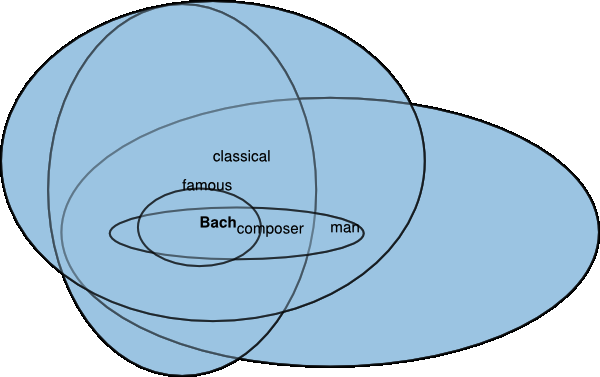
Outline
- Node classification
- Node classification with Gaussian embeddings
- Recommendation with Gaussian embeddings
Heterogenous graphs: classification and regression
Context
Task: Node Classification
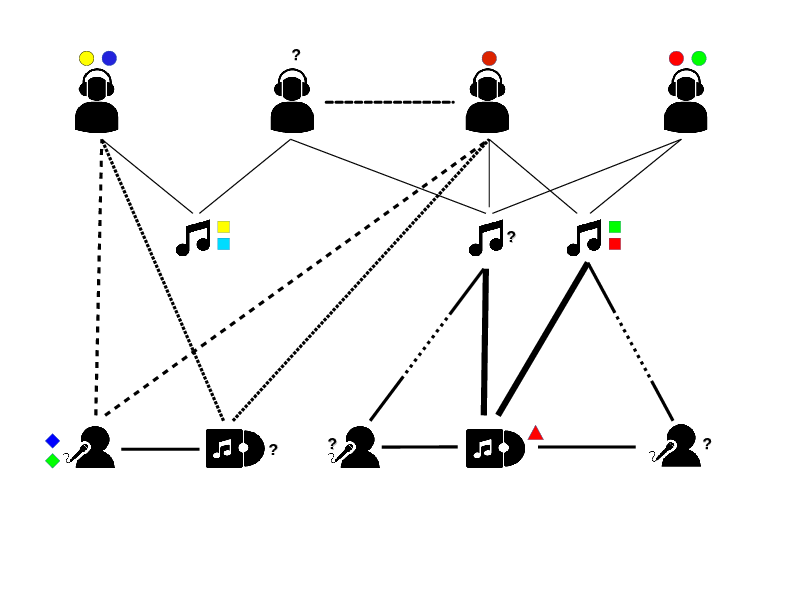
- Data
- Heterogeneous graphNode type specific labelsA subset of labelled nodes
- Task
- Transduction: predict missing labelsex. Predict photo tags, user preferences, etc.
State of the art
Content-based classification
Iterative classification [Neville 00, Belmouhcine 15]
- Standard classification extended to relational data
- Local classifier = node attributes + neighbor labels statistics
Label propagation
- Random walks [Zhu 02, Zhou 14, Nandanwar 16]
- y~i=∑ijpijyj
- No objective function
- No learning (except edge weights)
- Label-based regularization [Zhou 04,Belkin 06]i∑Δ(y~i,yi)+λij∑\bbary~i−y~j\bbar2
State of the arts - limitations
Limits
- Heterogeneity: nodes, edges and labels
- Structure: nodes of same type might be far away in the graph
Solutions
- Projection to homogeneous graphsProblem: No interaction between node of different types
- Graffiti: Multi-hop random walk [Angelova 12]
- Handles different node/label types
- Two-hop random walk
Deterministic model (LaHNet)
Classification loss + graph regularization
L(z,θ)=Lclassification(z,θ)+LGraph(z)- Graph classification termLclassification(z,θ)=i∈NC∑ℓ∈Lti∑#LtiψiΔC(f(zi;θℓ),yiℓ)where ΔC is a Hinge loss, and f(⋅;θℓ) a linear classifier
- Graph regularization termLgraph(z)=(i,j,r)∑Φijwr\bbarzi−zj\bbar2
Note: ψ and ϕ are hyperparameters
Properties
Connected nodes are close in the latent space
- (Indirectly) connected nodes of the same type will be classified similarly
- Exploits correlations between labels of (connected) nodes of different types
Learning relation-specific weights
LastFM statistics
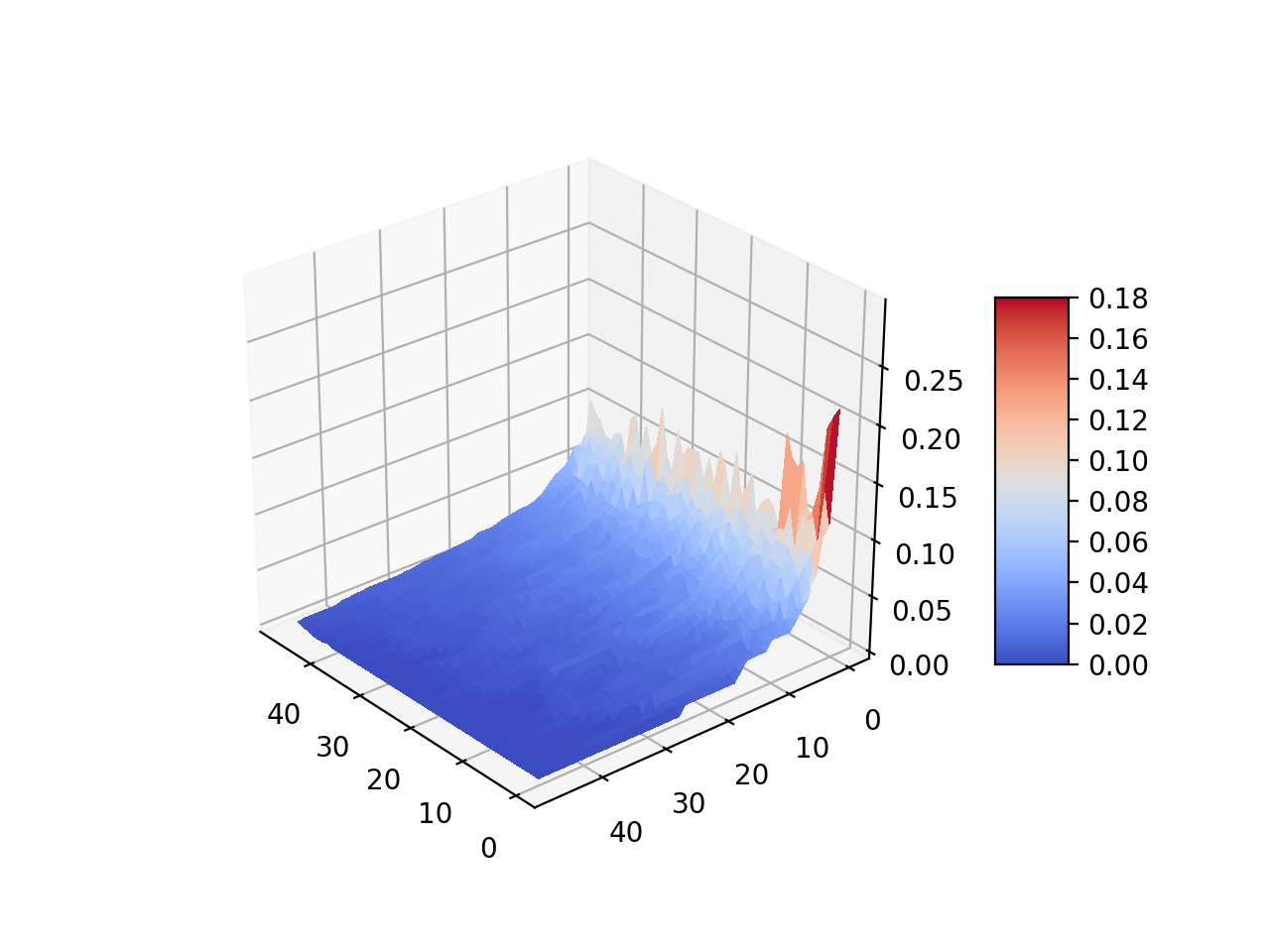
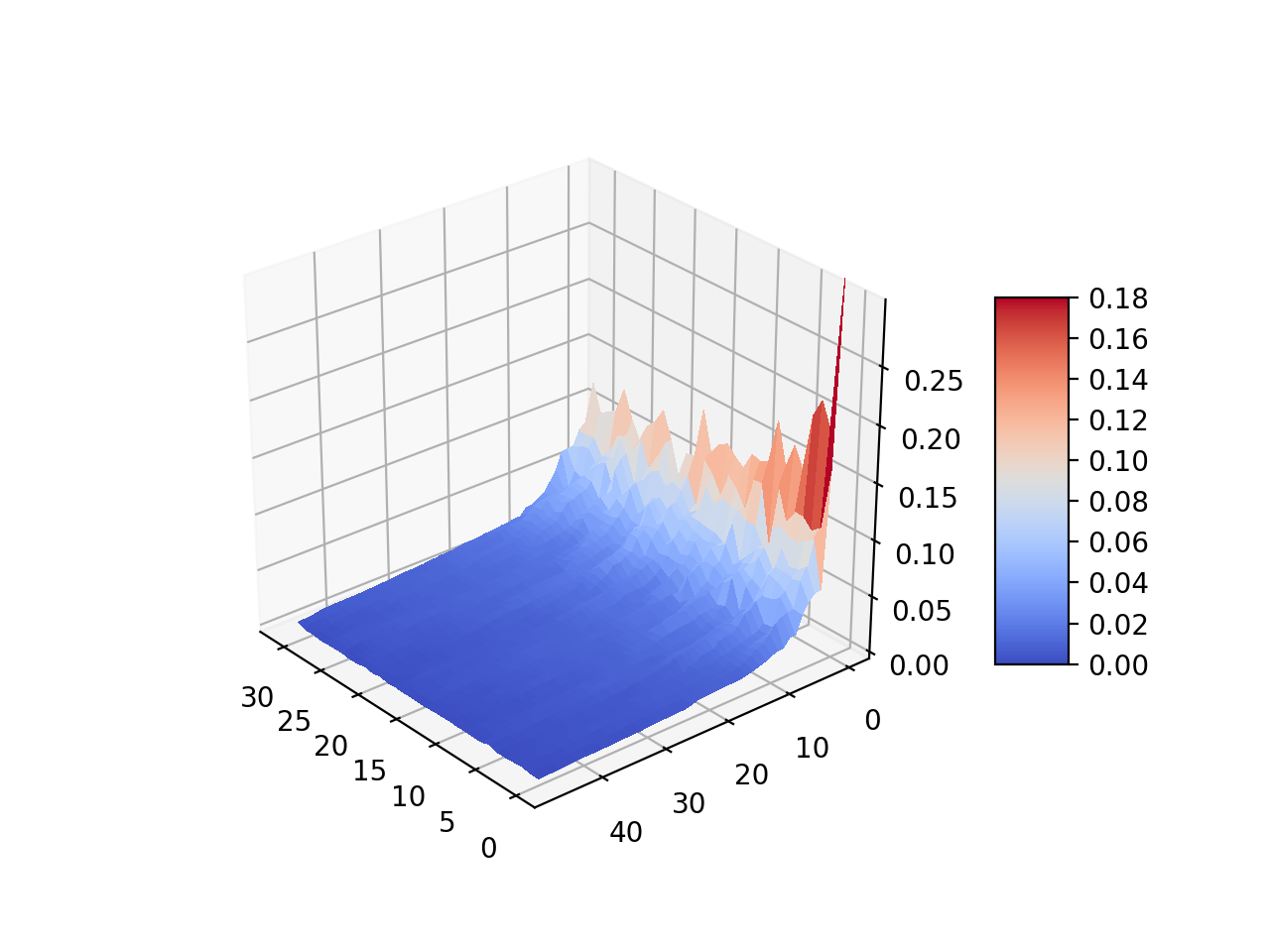
Learning relation-specific weights
- Grid search: too many hyperparameters
- Solution: Continous Optimization of Hyperparameter [Bengio 00, Luketina 16]
- Coordinated gradient descent
- Update representations (z) and classifiers (θ) with NC
- Update relation weights NW st NC∩NW=∅LW(w)=i∈NW∑ℓ∈Lti∑#LtiψiΔC(f(zi(w);θℓ(w)),yiℓ)Express representations wrt hyperparameters
- ∇Lgraph=0⟹Closed form for zi⋆(w)
- Gradient descent
Heterogeneous Classification with Gaussian Embeddings (HCGE)
Each node i is associated with
Zi∼N(μi,Σi)where Σi is diagonal (D) or spherical (S)
Classification loss
- (1 = 2) ΔEV(Z,y)=max(0;1−y×EZ(fθl(Z))
- (1 ≠ 2) ΔPr(Z,y)=−logP(y×fθl(z)>0)
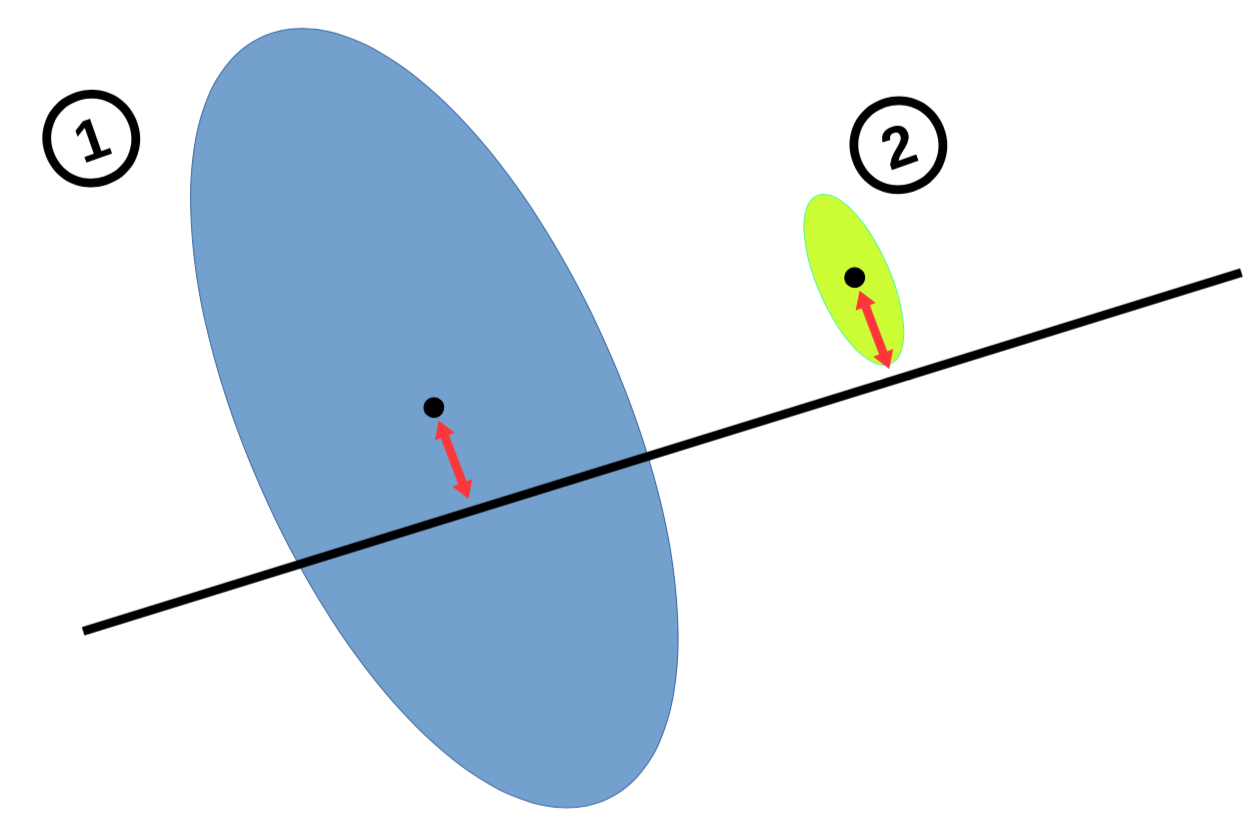
Heterogeneous Classification with Gaussian Embeddings (HCGE)
Graph Regularization loss
DKL(zj\bbarzi)=∫x∈RN(x;μj,Σj)logN(x;μi,Σi)N(x;μj,Σj)dx=21(tr(Σi−1Σj)+(μi−μj)TΣi−1(μi−μj)−d−logdet(Σi)det(Σj))Experimental protocol
- 5 datasets (DBLP, FlickR, LastFM(x2), IMDB)
- 3 representative baselines
- Unsupervised (LINE)
- Homogeneous (HLP)
- Heterogeneous (Graffiti)
- Evaluation = micro Precision@k
- Varying size of the training set (in % of labelled nodes)
Results
| Train ratio | 10% | 50% | ||||
|---|---|---|---|---|---|---|
| Model | DBLP | Flickr | LastFM | DBLP | Flickr | LastFM |
| LINE | 19.5 | 20.7 | 20.4 | 22.3 | 21.8 | 20.5 |
| HLP | 24.1 | 26.3 | 38.4 | 39.4 | 54.1 | 52.1 |
| Graffiti | 30.9 | 24.5 | 40.1 | 41.2 | 54.0 | 53.2 |
| LaHNet | 32.1 | 29.3 | 36.3 | 44.4 | 54.0 | 56.6 |
| HCGE(ΔEV,S) | 30.9 | 32.7 | 44.0 | 44.6 | 55.8 | 60.4 |
| HCGE(ΔEV,D) | 30.4 | 32.6 | 43.6 | 43.9 | 55.8 | 60.3 |
| HCGE(ΔPr,S) | 27.9 | 29.7 | 27.8 | 45.5 | 54.8 | 58.5 |
| HCGE(ΔPr,D) | 28.3 | 31.9 | 29.4 | 45.7 | 55.9 | 58.9 |
Learned weight
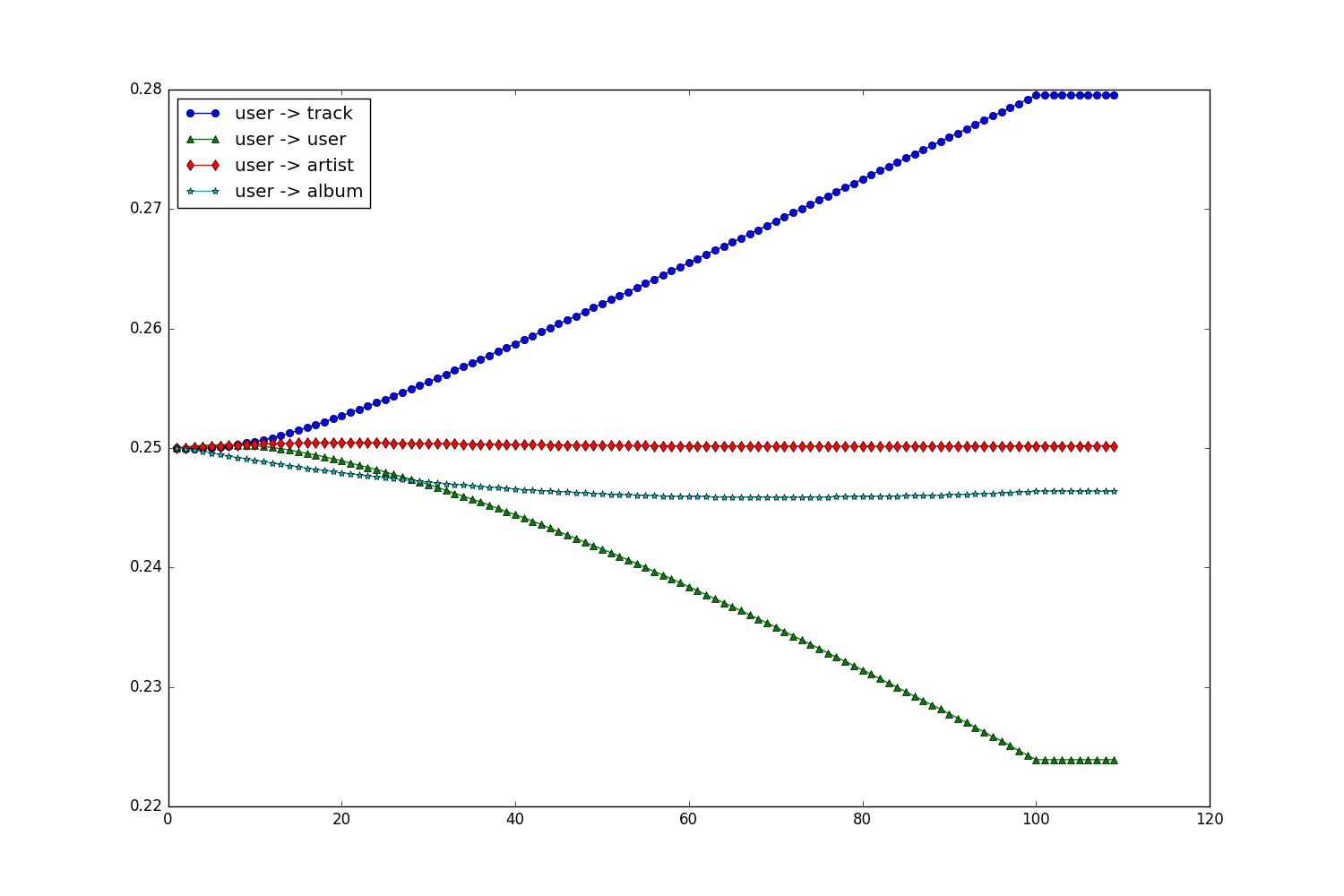
Classifiers interaction
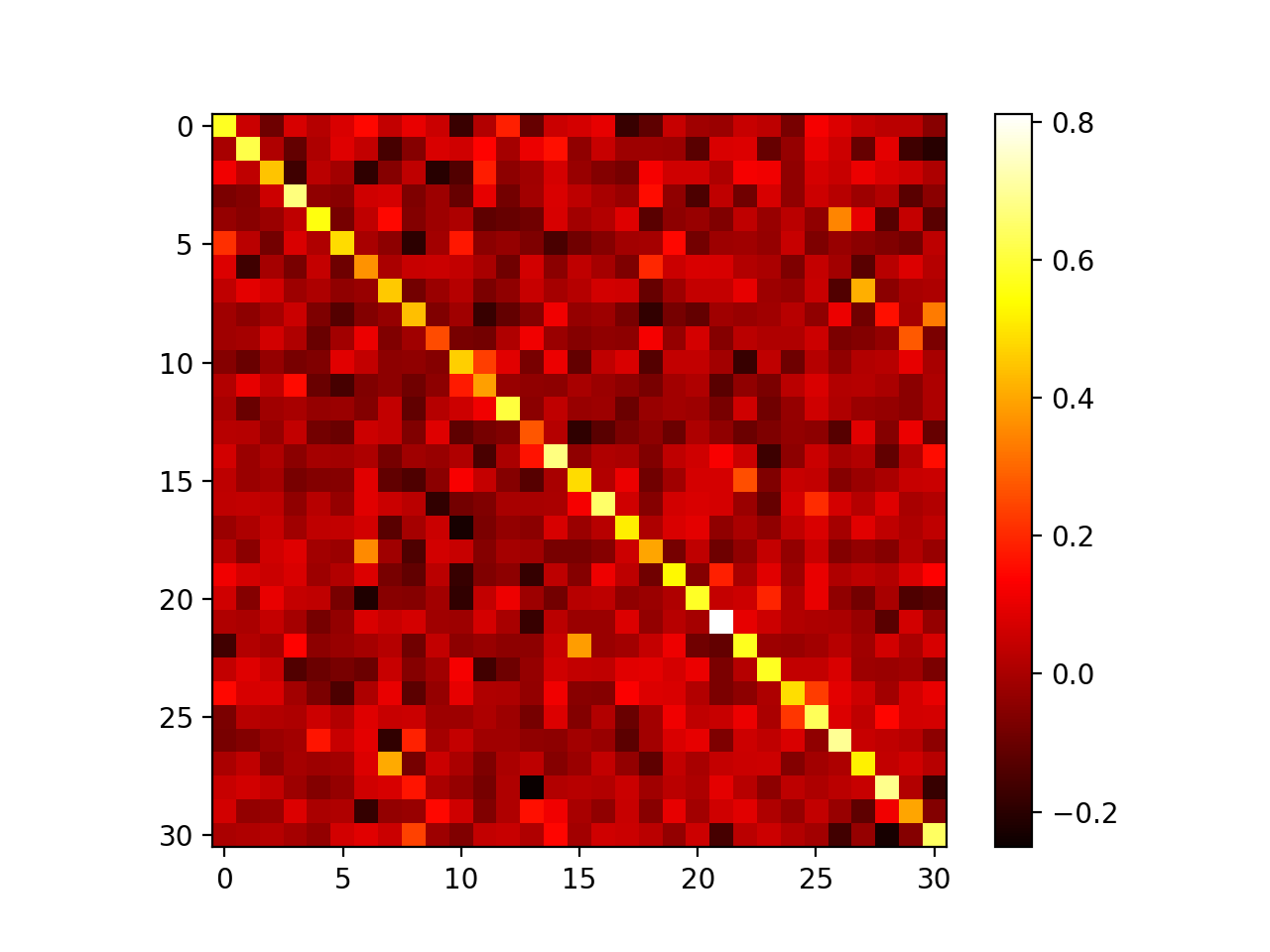
HCGE: PageRank vs Variance
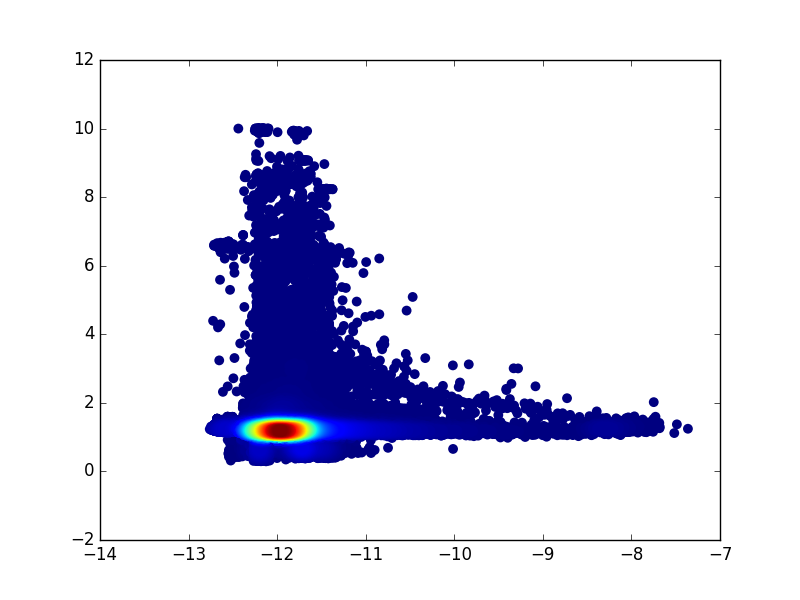
Recommendation
Task
Collaborative filtering
- Data = Ratings given by users on a (small) subset of items
- Goal = recommend new items to users
- Hypothesis = Users that rated similarly items will rate similarly new items
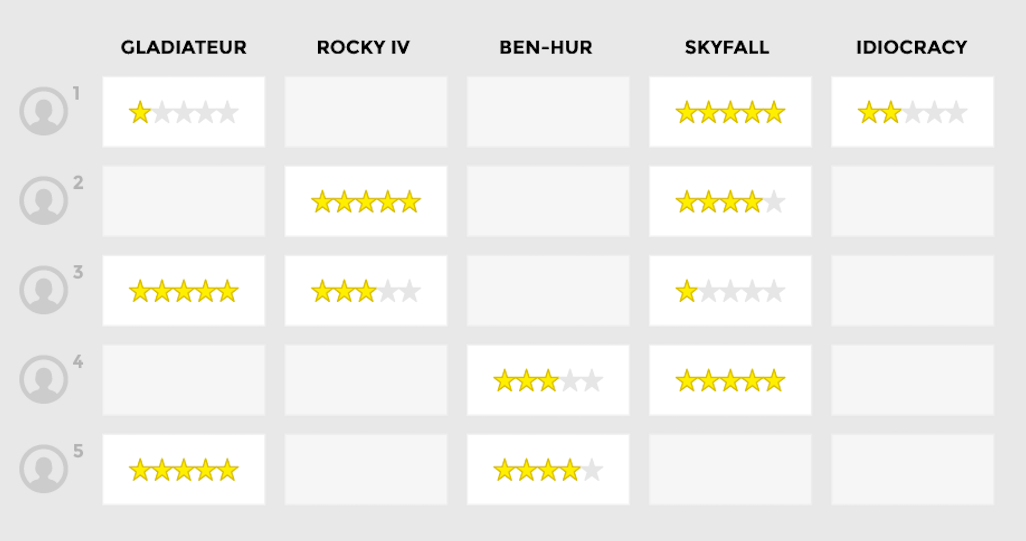
Matrix factorization
Koren (2009): Matrix Factorization Techniques for Recommender Systems
Score = inner product of user/item representations + bias
rui=μi⋅μu+biOptimized by minimizing LSE (with some regularization)
(u,i)∑\bbarr^ui−rui\bbar2Learning to rank approaches in recommendation
- Regression: Matrix factorization (Koren 2009)
- Classification: Each class is an item to recommend (Covington 2016)
- BPR (Bayesian Personalized Ranking): likelihood of observed preferences (Rendle 2009)
- Neural-network based: matching preferences (Sidana 2018)
- CliMF: reciprocical rank (Shi 2012)
- CofiRank: lower bound of nDCG (Weimer 2007)
Limits
The main limits of these models
- Cold-start
- Usually dealt with using meta-information
- Contradictions in ratings
- No satisfying solution
- Diversification
- No direct way to estimate the covariance of results (Wang et Zhu, 2009)
Gaussian model for recommendation
Xu∼N(μu,Σu) and Xi∼N(μi,Σi)with
Σ∙=diag(σ∙1,…,σ∙d)Prior on (mean, precision) is a Normal-Gamma distribution (with mode: mean 0, variance 1)
Gaussian representations

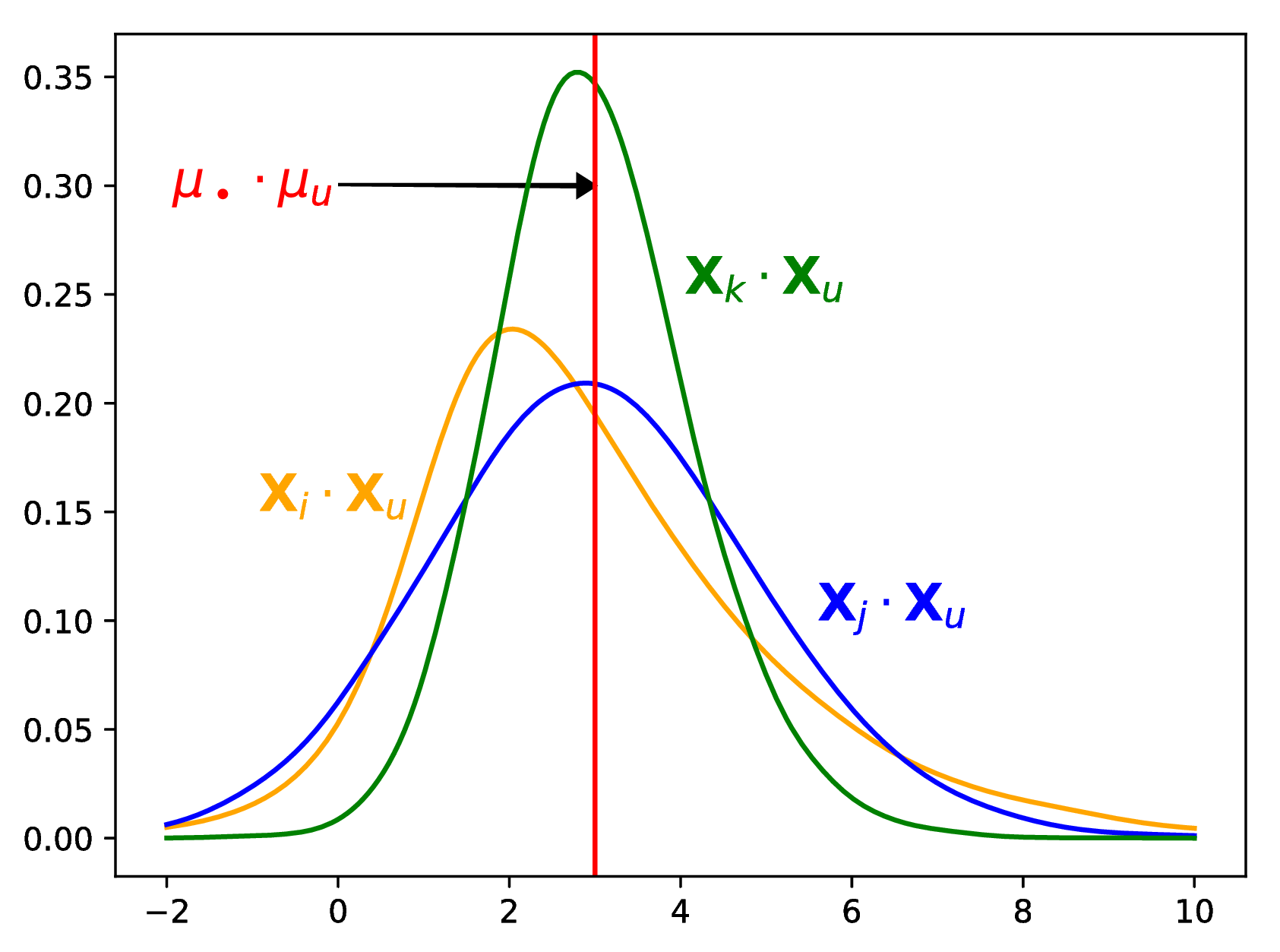
Three items having the same mean but a different variance, and a user
Pairwise learning to rank (GER-P)
Maximum A Posteriori criterion
p(D∣Θ)p(θ)=(u,i,j)∈D∏p(i>uj∣Θ)p(θ)BPR
p(i>uj∣Θ)=σ⎝⎛ruiμi⋅μu+bi−ruj(μj⋅μu+bj)⎠⎞GER-P
p(i>uj∣Θ)=p(Xi⋅Xu+bi>Xj⋅Xu+bj∣Θ)=p(ZuijXu⋅(Xj−Xi)<bi−bj∣∣∣Θ)Pairwise learning to rank (GER-P)
We approximate Zuij using a normal with matching moments:
E[Zuij]=μu⊤(μj−μi)Var[Zuij]=2μu⊤(Σi+Σj)μu+(μj−μi)⊤Σu(μj−μi)+tr(Σu(Σj+Σi))Brown (1977) Means and Variances of Stochastic Vector Products with Applications to Random Linear Models
In practice, we make an error of ± 0.05 in the estimation in 99% of the samples
Listwise learning to rank (GER-L)
SoftRank
Optimizes E(nDCG∣u,Iu)
nDCG=CGmax1(i,r)∈list∑g(i)d(r)GER-L
p(S∣u,Iu)=E(nDCG∣u,Iu)=r∑i∑p(S∣r,u,i,Iu)p(R=r∣u,i,Iu)P(i∣u,Iu)Listwise learning to rank (GER-L)
with
p(S∣r,u,i,Iu)=CGmaxg(i)d(r)Recursion
P(R=r∣i,Iu∪{j})=P(R=r∣i,Iu)P(i>uj)+P(R=r−1∣i,Iu)P(i<uj) We then use a maximum a posteriori framework (contrarily to SoftRank)
θ⋆=argmaxθlogp(θ)+logobservationp(S∣u,Iu,θ)Ranking
i>uj⟺p(i>uj∣Θ)>0.5 which gives sui=μu⋅μi+bi
Exploits the variance of the score
sui=p(Xu⋅Xi+bi>0)Tries to balance risk (depending on α)
E(i∈L∑Sui)−αV(i∈L∑Sui)Optimized using a greedy approach
E(Sui)−αV(Sui)−2αj∈Ln∑cov(Sui,Suj)Experimental protocol
- 3 datasets (Movielens 100k, Yahoo and Yelp) for GER-P, Movielens 1M for GER-L
- GER-P is evaluated with the "positive" stategy (GER-L with all)
- Metric = nDCG@1, @5 and @10 (reranking of test items)
- Baselines = Most Popular (MP), Soft Margin (SM), (BRPMF) BPR, CofiRank
Statistics
| Dataset | Users | Items | Ratings | ||||||
| % Train | 10 | 20 | 50 | 10 | 20 | 50 | 10 | 20 | 50 |
| Yahoo! | 3386 | 1645 | 286 | 1000 | 1000 | 995 | 159 | 100 | 33 |
| MovieLens | 743 | 643 | 448 | 1336 | 1330 | 1307 | 95 | 91 | 81 |
| Yelp | 13775 | 8828 | 3388 | 44877 | 39355 | 27878 | 980 | 791 | 467 |
Experimental results (GER-P / Yahoo)
| Train Size → | 10 | 30 | 50 | ||||||
|---|---|---|---|---|---|---|---|---|---|
| Model ↓ | N@1 | N@5 | N@10 | N@1 | N@5 | N@10 | N@1 | N@5 | N@10 |
| MP | 53.0 | 59.1 | 67.3 | 52.5 | 58.3 | 66.4 | 53.6 | 57.8 | 64.0 |
| BPRMF | 52.8 | 59.0 | 67.2 | 52.2 | 58.3 | 66.4 | 52.2 | 57.7 | 63.5 |
| SM | 50.9 | 56.7 | 65.4 | 49.7 | 55.6 | 64.2 | 49.9 | 54.1 | 60.3 |
| CR | 53.5 | 60.3 | 68.2 | 57.8 | 61.7 | 68.9 | 56.0 | 60.0 | 65.6 |
| GER-P | 53.5 | 60.3 | 68.3 | 53.8 | 60.7 | 68.2 | 54.3 | 59.6 | 65.3 |
Experimental results (GER-P / MovieLens 100K)
| Train Size → | 10 | 30 | 50 | ||||||
|---|---|---|---|---|---|---|---|---|---|
| Model ↓ | N@1 | N@5 | N@10 | N@1 | N@5 | N@10 | N@1 | N@5 | N@10 |
| MP | 66.0 | 64.7 | 65.8 | 68.4 | 65.3 | 66.3 | 69.1 | 67.4 | 67.5 |
| BPRMF | 66.1 | 64.6 | 65.7 | 66.3 | 64.3 | 65.8 | 66.9 | 65.0 | 66.2 |
| SM | 55.9 | 57.5 | 60.3 | 58.3 | 59.6 | 61.6 | 58.6 | 60.4 | 62.5 |
| CR | 69.0 | 67.3 | 68.6 | 69.7 | 68.5 | 69.5 | 71.4 | 69.4 | 70.6 |
| GER-P | 70.3 | 67.7 | 70.0 | 72.0 | 69.5 | 71.1 | 72.5 | 71.3 | 71.5 |
Experimental results (GER-P / Yelp)
| Train Size → | 10 | 30 | 50 | ||||||
|---|---|---|---|---|---|---|---|---|---|
| Model ↓ | N@1 | N@5 | N@10 | N@1 | N@5 | N@10 | N@1 | N@5 | N@10 |
| MP | 40.7 | 41.5 | 46.9 | 39.5 | 39.9 | 44.7 | 37.4 | 37.6 | 41.4 |
| BPRMF | 40.8 | 41.3 | 46.8 | 39.6 | 39.8 | 44.6 | 37.3 | 37.2 | 40.9 |
| SM | 37.3 | 38.3 | 44.4 | 35.8 | 36.9 | 41.9 | 33.4 | 34.1 | 38.0 |
| CR | 47.1 | 46.9 | 51.1 | 46.5 | 46.6 | 50.4 | 46.2 | 45.8 | 48.6 |
| GER-P | 55.2 | 52.2 | 56.2 | 57.4 | 53.5 | 56.4 | 58.2 | 53.7 | 55.3 |
Experimental results (GER-L / MovieLens 1M)
Preliminary results
| Train Size → | 10 | 30 | 50 | ||||||
|---|---|---|---|---|---|---|---|---|---|
| Model ↓ | N@1 | N@5 | N@10 | N@1 | N@5 | N@10 | N@1 | N@5 | N@10 |
| BPRMF | 56.9 | 54.0 | 54.9 | 57.5 | 54.2 | 54.6 | 55.9 | 53.1 | 53.2 |
| BPR-L | 65.5 | 59.7 | 56.8 | 66.0 | 60.5 | 57.0 | 65.9 | 59.4 | 55.6 |
| SOFTRANK-L | 64.5 | 59.2 | 57.5 | 66.0 | 60.2 | 56.9 | 65.3 | 59.3 | 55.6 |
| GER-P | 68.5 | 62.3 | 58.1 | 67.3 | 61.4 | 56.9 | 68.0 | 61.1 | 56.2 |
| GER-L | 67.2 | 61.5 | 57.8 | 67.3 | 61.7 | 57.3 | 68.4 | 61.7 | 56.5 |
Qualitative results (mean and variance)

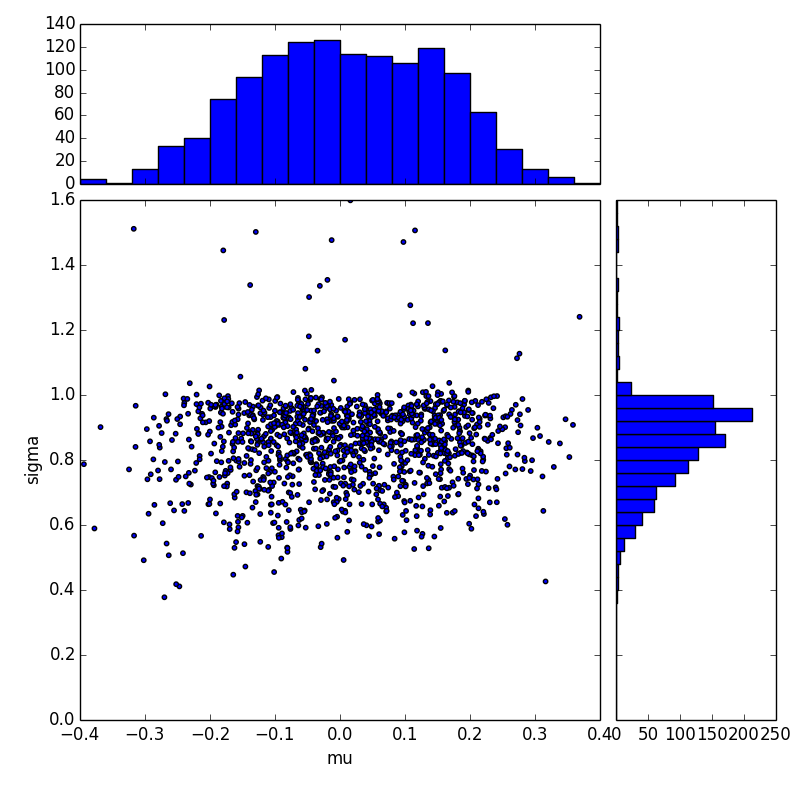
Qualitative results (variances)
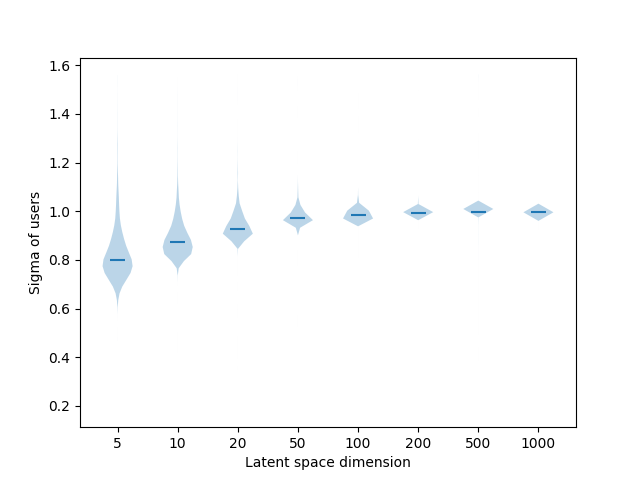
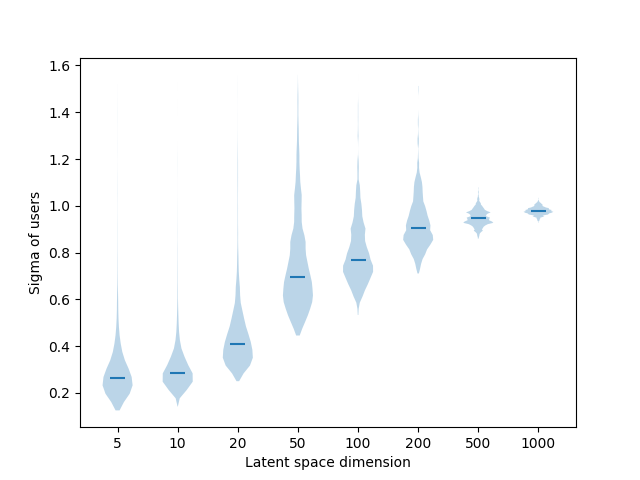
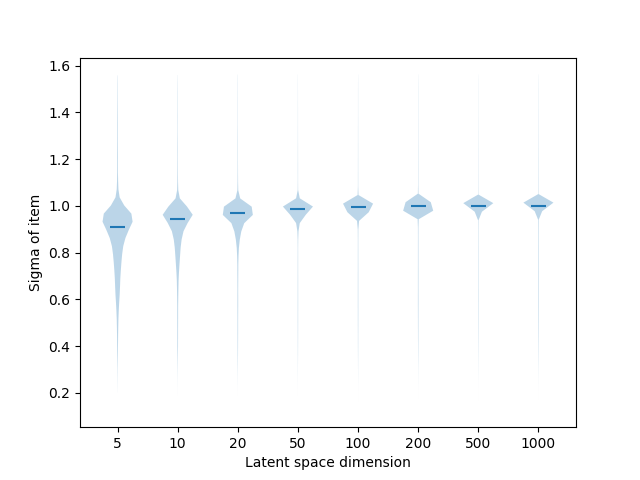
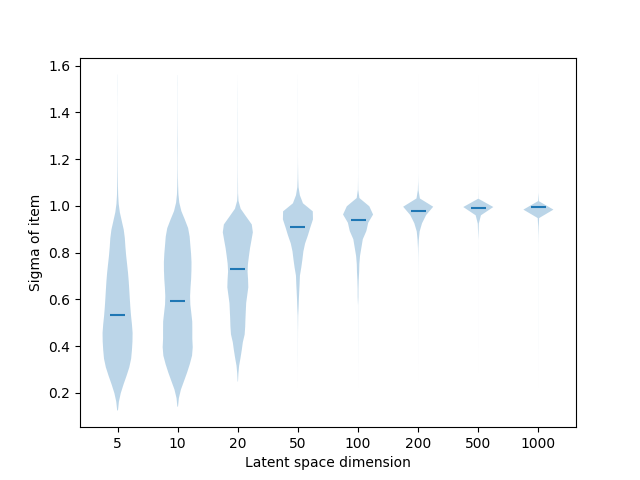
Conclusion
Conclusion and ongoing work
Main points
- Importance of training for the task
Representation learning for graph node classification
- Importance of learning hyperparameters
Gaussian representations
- Successful approach in 3 tasks (recommendation, node classification and regression)
Ongoing works (Recommendation)
- Full evaluation of GER-L and ranking strategies
- Content-based recommendation: content c→N(μ(c),σ(c))
Our papers
Multilabel Classification on Heterogeneous Graphs with Gaussian Embeddings (ECML 2016)
Modeling Relational Time Series using Gaussian Embeddings (NIPS Time Series workshop 2016)
Gaussian Embeddings for Collaborative Filtering (SIGIR 2017)
Représentations Gaussiennes pour le Filtrage Collaboratif (CORIA 2018)
Representation Learning for Classification inHeterogeneous Graphs with Application to Social Networks (TKKD 2018)

